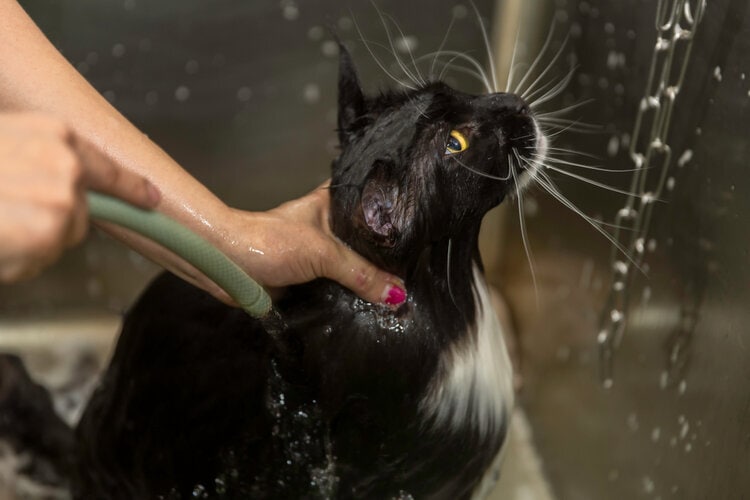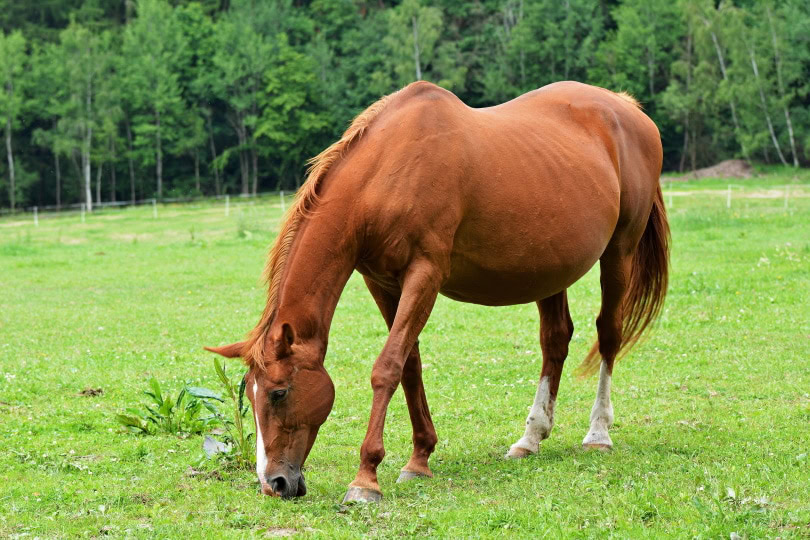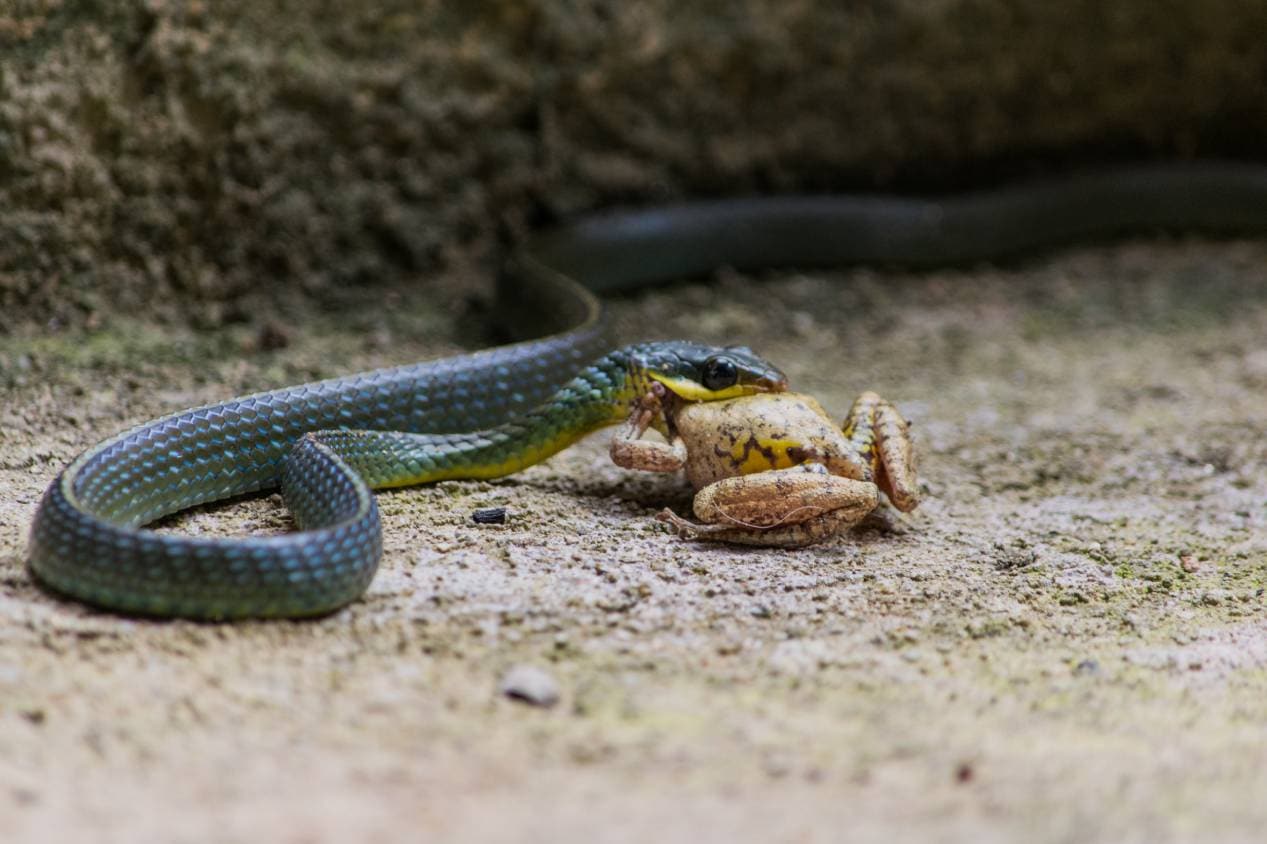VET APPROVED

The information is current and up-to-date in accordance with the latest veterinarian research.
Learn more »Click to Skip Ahead
Cats spend almost half of their day grooming. But sometimes their curiosity gets them into sticky situations, and they need our help to keep them clean. Maybe your cat is elderly or overweight and can’t bathe as well as they should.
You can indeed wash your cat with just warm water and a washcloth. This is preferred for some owners since it’s simple and doesn’t scar their cats for life. But maybe your cat needs something extra to get rid of the muck.
The best option is always cat shampoo since it’s designed especially for kitties. However, you may not have that on hand right now. It happens. Try these 10 shampoo alternatives to help your kitty feel fresh if you’re in a pinch.
The good news is that these are safe, effective options until you buy some quality cat shampoo. You probably have some of the ingredients in your pantry already.

What About Human Shampoo?
Before we begin, let’s chat a little about human shampoo. Sometimes, owners want to reach for the Dove bar soap or the bottle of Head and Shoulders sitting in their shower. We strongly discourage using human shampoo to bathe your cat.
Human skin is more acidic than cat skin. Using human shampoo not designed for cats may clean their fur, but it can lead to skin irritation, like dry skin, rashes, hot spots, etc.
Instead, try the following options until you can find some cat shampoo.
If you have questions about bathing your cat, their skin conditions or about grooming in general, you should consult a vet.
The 10 Methods to Wash Cats Without Shampoo
1. Pet Wipes
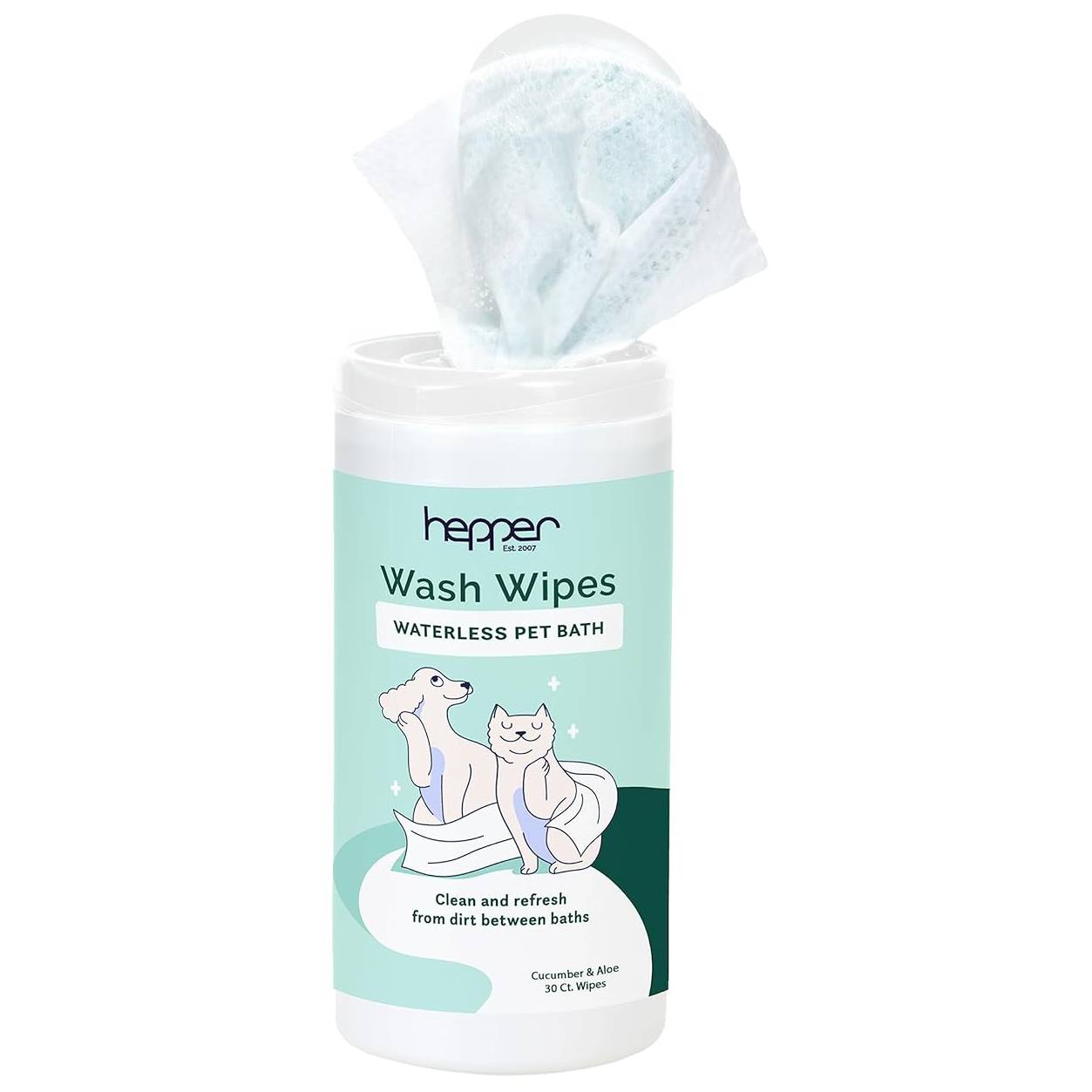
If you have some pet wipes onboard, you can effectively clean your cat without needing to put them in a bath. It is important to note that baby wipes are not a substitute for pet wipes and can be potentially harmful to cats. Pet wipes, however, only contain ingredients that are non-toxic to pets.
Keeping pet wipes on hand will help remove messes that require immediate removal. The best part about them is they are portable. Keep some in your car, your pet bag, or anywhere that you may need to use them in a pinch.
To use: Open the packaging and remove however many wipes you need to clean your cat. Slowly stroke the necessary areas with the wipe.
- Waterless shampoo option
- Great for spot cleaning
- Portable
- Not a deep-cleansing option
- Baby wipes are not safe for use on cats
2. Baby Shampoo
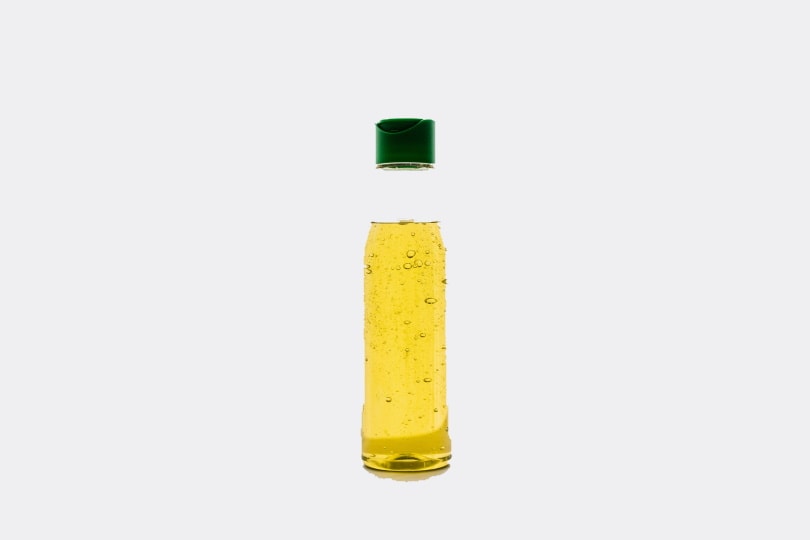
Yes, baby shampoo is technically human shampoo, but it could be a friendly alternative if you need to bathe your cat. Baby shampoo isn’t something you want to use on your cat regularly. However, this soap gently cleanses a small child’s delicate, sensitive skin. Usually, this shampoo is tearless, making it a good alternative for a cat’s tender skin. You can also find fragrance-free options.
This option won’t work for everyone since it’s unlikely to have baby shampoo if you don’t have a baby.
To use: Apply baby shampoo directly to your cat’s skin or dilute the shampoo to weaken the soap.
- Tearless formula
- Can be fragrance-free
- Formulated for gentle, sensitive skin
- You may not have baby shampoo around if you don’t have small children
3. Castile Soap
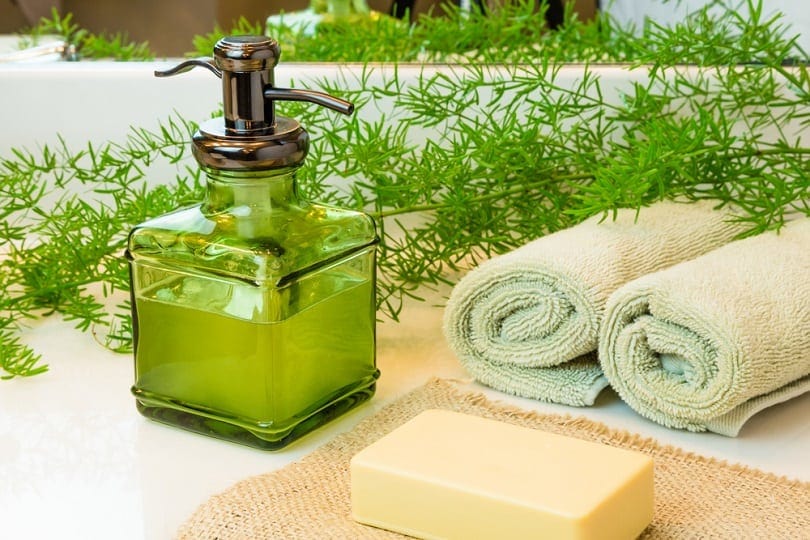
Castile soap is a popular alternative cleaner for many reasons. It’s non-toxic and natural, and it can clean almost anything, including your cat. Castile soap is a vegetable-based soap absent of animal fats and harsh chemicals. Many castile soaps have coconut oil, castor oil, or hemp. All of these are fine for your cat’s skin.
Use fragrance-free, 100% castile soap. You don’t want scents on your cat’s delicate skin since some essential oils are toxic to cats. Unfortunately, castile soap often comes with added fragrances of essential oils. But if you have a bottle of plain castile soap, feel free to use it.
Because castile soap is natural, you’ll need to dilute it; otherwise, the pure form may be too harsh on your cat’s skin.
To Use: For a mild shampoo, mix 1 part castile soap with 10 parts water. Mix 1 tablespoon of castile soap in 1 cup of water for a stronger shampoo.
- Non-toxic
- Natural
- You can’t use castile soap with added fragrances
4. Water and Vinegar
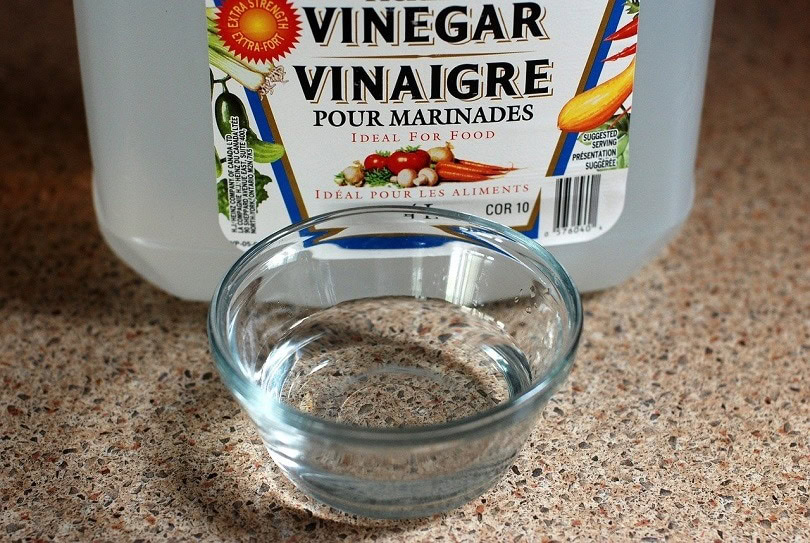
Vinegar is a tried-and-true natural method of cleaning. Here’s another way to use it: Turn it into a cat shampoo! Vinegar is a natural flea and tick repellent and helps neutralize odors. It may even help with dandruff. If you dilute it, vinegar could be a suitable method for cleaning your kitty.
This method is a watery solution, so don’t expect any suds. You can use white distilled vinegar or apple cider vinegar. You don’t want to use too much vinegar. It’s best to avoid the face since the scent alone is powerful. Otherwise, the smell will repel your cat.
To use: Fill the bathtub with warm water. Add ½–1 cup vinegar to the water.
- Natural
- Non-toxic
- Most people already have vinegar
- The scent may repel your cat
- Some people are sensitive to the smell of vinegar
5. Dawn Dish Soap
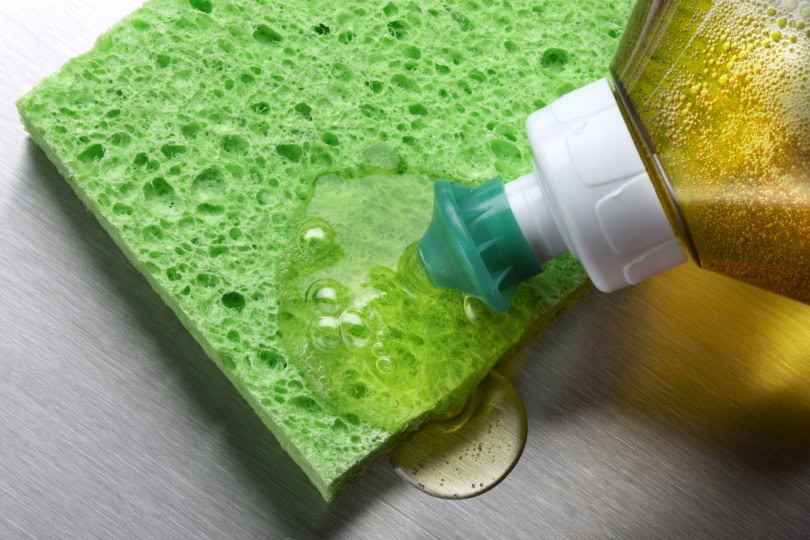
The great thing about using Dawn dish soap? Almost everyone has it in their home! Many people know that wildlife rescue centers use Dawn dish soap to clean wildlife of oil and other impurities. You can also use it on your cat! This is a great option for kitties who have motor oil on them.
Unfortunately, we can’t speak for other dish detergents. If you use another dish soap brand, it’s best to avoid using it on your cat.
Since Dawn helps strip harmful oils from wildlife, it will do the same for your cat’s natural oils. Your cat’s skin may feel dry after the bath.
To use: Mix ¼ cup Dawn dish soap with 2 cups of water. You can use this with the vinegar mixture if you’d like.
- Most people have Dawn dish soap
- Great if your cat has motor oil on fur
- Can dry your cat’s skin
- Not applicable for other dish detergents
6. Baking Soda
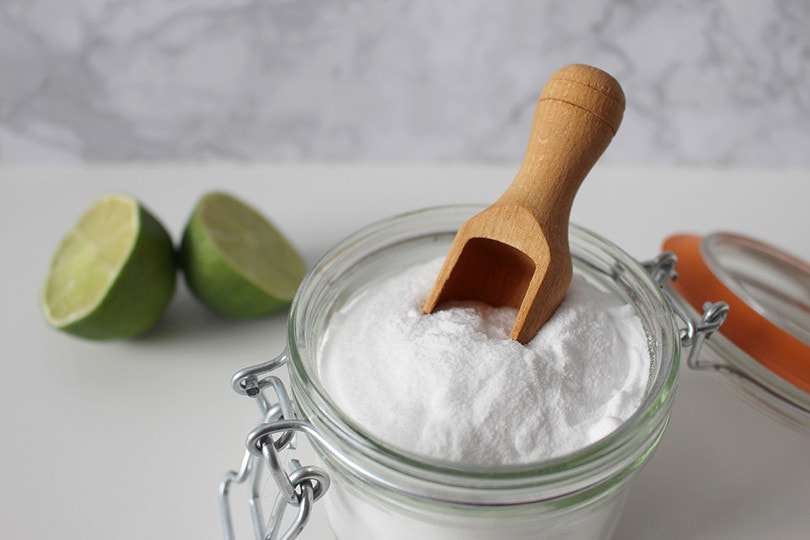
Baking soda is another natural product with several benefits for cooking, cleaning, and even cleansing your cat. Not many people think about baking soda as a method for a pet bath. Granted, it’s not the best way. You won’t get a deep cleanse like a fully immersive bath can offer since you’re limited to how much baking soda you can use. Plus, stains and oil won’t wash away.
However, this method is ideal for nervous cat owners wanting to deodorize their cat’s coat to smell fresh. If this is you, try applying baking soda to your cat’s coat and see if it helps.
The baking soda will leave white dust behind if you have a cat with a darker coat. You can fix this by thoroughly removing the baking soda with a dry washcloth.
To use: Sprinkle ¾ teaspoon of baking soda over your cat’s coat (1 tablespoon for cats over 11 pounds). Gently rub in the baking soda with your fingers. Let it set for a few minutes before wiping it off with a dry towel. Afterward, use a brush to ensure all baking soda is removed from your cat’s coat.
- Easy
- Natural
- Non-toxic (in certain amounts)
- Most people have baking soda
- Not a wet wash
7. Cornstarch
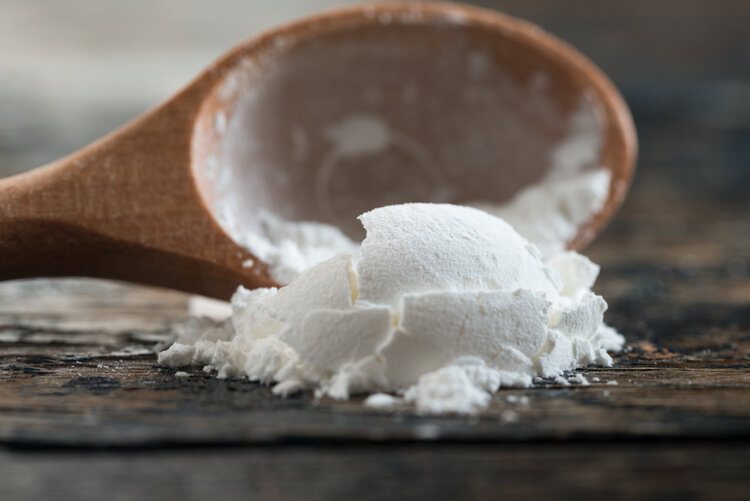
Cornstarch isn’t only for cooking; you can also use it as a dry shampoo for your cat! Cornstarch won’t offer a deep cleanse for your cat’s coat. It won’t wash away oil and stains. However, you can use it to absorb excess oil and remove stains. It can even help remove mats and tangles.
It’s not common for cats to have corn allergies, but it does happen. A study showed that cornstarch is less allergenic for cats and dogs than corn flour found in pet foods. Your cat should be fine if it has a corn allergy, but it may be better to try baking soda instead. Or you can use arrowroot powder, a non-toxic plant-based thickening agent.
To use: Sprinkle a small amount of cornstarch in the desired area. Gently rub in the cornstarch with your fingers. Use a brush to ensure all cornstarch is removed from your cat’s coat.
- Easy
- Non-toxic (to certain amounts)
- Most people have cornstarch
- Not a wet wash
8. DIY Oatmeal Wet Shampoo
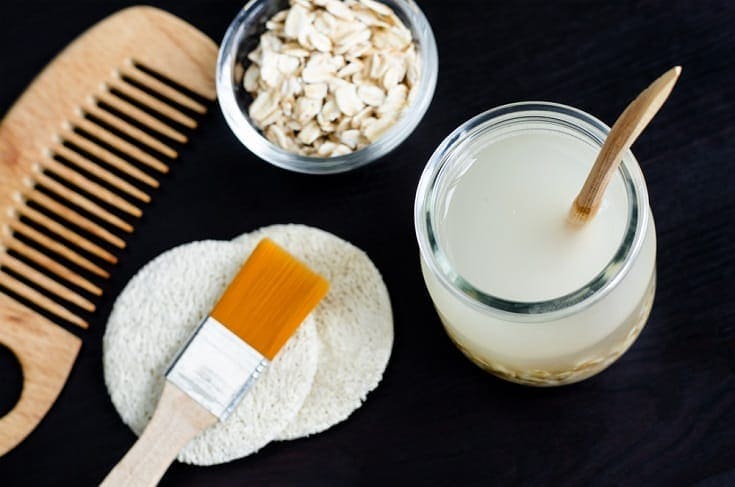
If your kitty has dry skin, this DIY shampoo can help nourish your pet’s skin and coat without irritation. This DIY shampoo is also easy, so you don’t have to do much tinkering in the kitchen to prep for bath time.
You’ll need to grind oatmeal in a food processor or blender. A downside to this method is that you need to leave the solution on your cat’s coat for up to 5 minutes for maximum benefits. That can be challenging with a soaking-wet kitty out for revenge.
To use: Mix 1 cup ground oatmeal, ½ cup baking soda, and 4 cups warm water in a container. Carefully pour the mixture over your cat’s fur and massage it into the coat. Let sit for 5 minutes and rinse thoroughly.
- A great option for dry skin
- Requires a generous amount of baking soda
- Needs to sit for 5 minutes
9. DIY Dry Shampoo
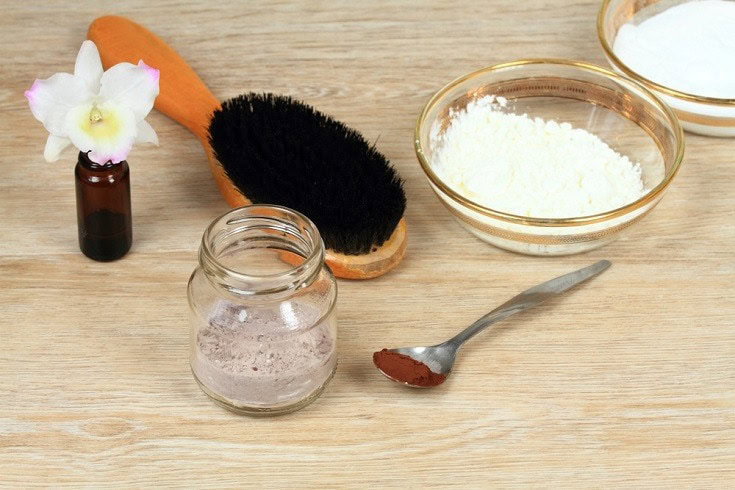
This dry shampoo aims to deodorize, reduce oils, and detangle. This is another great option if your cat has dry skin, but you don’t want to put your cat (or yourself) through the whole bath time experience.
Since baking soda is absent, you can use more of this DIY dry shampoo on your cat’s coat compared to only using baking soda. You’ll also need cornmeal. If you don’t have cornmeal, you can substitute it for semolina flour, rice flour, ground flaxseed, or blended corn grits.
To use: Mix ½ cup finely ground oatmeal, ½ cup of cornmeal, and 2 tablespoons of cornstarch. Sprinkle onto your cat’s coat and let sit for 5 minutes. Thoroughly brush your cat afterward.
- Easy
- Can use more than one-ingredient dry shampoos
- Not a wet wash
- Requires cornmeal, which some people may not have
10. Hand Soap
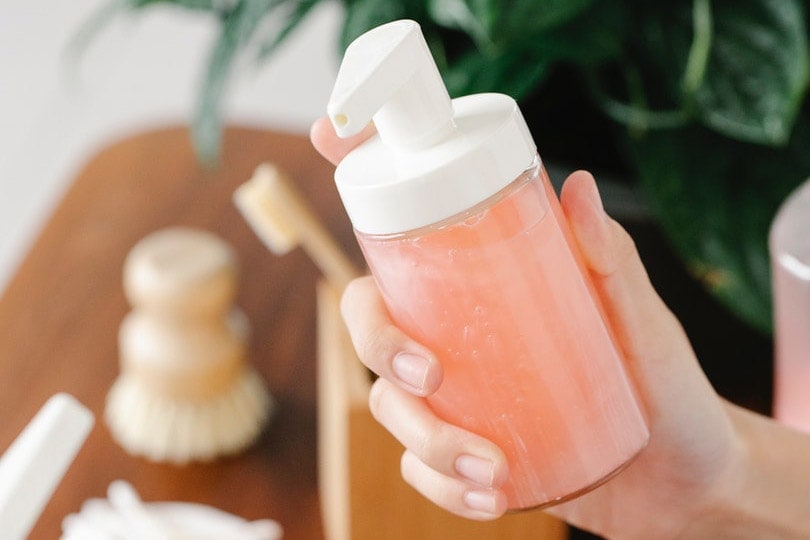
Hand soap makes it to the bottom of the list because many hand soaps are not safe for cats. Most likely, this will not be a good option. However, you can use some natural hand soaps on your cat if you’re really in a pinch.
Brands like Mrs. Meyers, Bean & Lily, Puracy, Eco Me, and Better Life have great hand soaps with non-toxic chemicals. Many of these hand soaps have essential oils, so they won’t be the best option. The listed shampoos above will give you a better wash and peace of mind. But if you must use soap on your cat, these brands could be safe for a quick wash.
To use: Check the ingredients in your hand soap to ensure that the ingredients are okay to use one time on your cat. Dilute the soap and apply to your cat’s coat. Rinse thoroughly.
- Easy
- Not all hand soaps are safe for cats

Tips for Bathing Your Cat
Bathing a cat is very different from bathing a dog. Neither you nor your cat enjoys the experience, but sometimes it must be done. Whether you’re doing a dry bath or wet bath, look at these tips to make bath time smoother for you and your kitty.
- Trim nails before bathing your cat: Always trim your cat’s nails to avoid injury.
- Brush first and after: Brush before the bath to avoid plumbing issues. This also helps remove excess dirt.
- Time the grooming session right: Don’t bathe your cat when they’re energetic, like after eating a meal.
- Apply traction to the bottom of the tub: Cats need to feel secure. Having traction for them helps them keep calm during an unsettling time.
- Don’t leave the water running: Running water will scare your cat and try to escape.
- Rinse thoroughly: Even with certified cat shampoo, it’s always best to rinse as much of the shampoo as possible to avoid skin irritation.
- Clean the face with a washcloth: Don’t pour water over your cat’s face. This can cause ear infections, eye problems, and trust issues.
- Dry thoroughly, including the face: Help your kitty by helping it dry. Don’t forget the face, especially around the ears.
- Offer treats: Reward your cat for enduring bath time, even if it didn’t go well.
- Give your cat space: Cats need time to recuperate. Give your cat time to relax, groom, and rebuild their trust.


Conclusion
It’s always best to use certified cat shampoo on your kitty. But sometimes, we don’t always have what we need, when we need it. Luckily, there are options for you to temporarily clean your cat and give you peace of mind.
Cats are excellent groomers, so ask yourself if your cat really needs assistance with bathing. If the answer is yes and you don’t have cat shampoo, try these 10 alternatives to help your cat feel neat as a button.
Featured Image Credit: Bussakorn Ewesakul, Shutterstock
